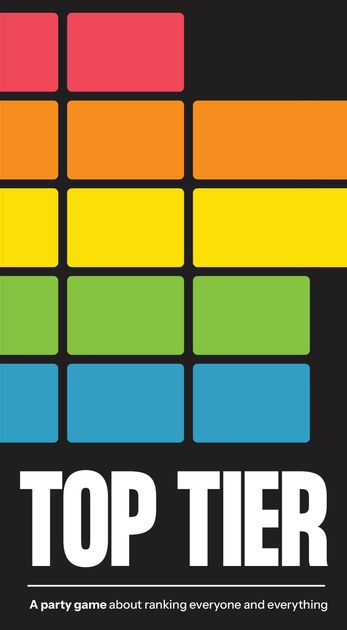SMOOSH JUICE
Designer Diary: Top Tier | BoardGameGeek News

Hey, we’re Stopgap Games — three board game hobbyists-turned-designers, and we recently launched our first game through Indie Boards & Cards: Top Tier!
About the Game
Top Tier is what happens when you take those internet tier list arguments and turn them into a party game. One person (the “Tier Wizard”) looks at a random category like “Would be the best cult leader” and secretly ranks eight people or characters across five tiers from S down to D, then everyone else works together to figure out where the Tier Wizard placed each name.
We’ve found the game works best with a mix of fictional characters, celebrities, historical figures, and even friends – just not people actually in the room. (We learned that one the hard way.) It gets very silly very fast when you’re debating whether Batman would be better at karaoke than SpongeBob SquarePants, or trying to guess whether your friend thinks Dolly Parton would make a better getaway driver than The Rock. The game is a fun way to learn more about your friends’ favorite characters and discover the weird ways your friends see the world.
Starting the Design Journey
Admittedly, we didn’t set out to create a party game as our first release. We were originally designing a Eurostyle game about climate change and imperialism. We would burn out on that project’s mathy design and make lightweight micro games as a way to cleanse the palette.
During one such palette cleanser, one of us brought up the idea of a tier list and asked the other two to rank some friends in a silly category they made up on the spot. We immediately began a heated debate on who would fall where in the ranking. The joke turned into a half-baked game, and after a few more rounds, we decided to lean in and see whether it actually had legs.
Early Prototyping/Proof of Concept
We hopped into Figma, a digital design tool, to set up a basic design and started listing various names and categories, testing as we went. We’re pretty spread out as a team, so we rely heavily on digital tools (which also saved us from the headaches of physical printing and writing).
We would play new versions of the game in rapid succession, changing the rules a bit each go-around until we had a loop that “clicked”. We probably tested over fifty rule variants in our early design sessions.
Our biggest design challenge, however, came from the categories themselves.
Category Card Framework
We spent a lot of time making and breaking categories to figure out what felt fun, and a few key themes evolved into a rubric for creating categories. The rubric itself continued to evolve along the way until we felt solid with what is (for now) its final form:
• Be Non-Observable: The category should force players to think about the eight people in situations they have not seen them in already (or are unlikely to have seen most people in). For example: “Coolest Glasses” is boring because some characters wear glasses, some don’t. “Could pull off a Groucho Mask” evens the playing field.
• Be Subjective: The category should not have a “real” answer that somebody would be able to determine. Categories with more subjective answers promote debate and increase the fun factor of a round. “Biggest shoes” is not a good category, but “best taste in shoes” might make that more fun.
• Be Specific: The category should be sufficiently specific so as to paint a detailed picture for players to imagine the people in. When the category sets the scene, we find that conversations are still fun, but decisions come easier and we see more creative interpretations of ability. “Strongest person” is not a great category whereas “Ability to go far in an arm-wrestling championship” sets the scene.
• Be Dynamic: Avoid a binary “yes/no” answer. This breaks the premise of ranking. A good test for this is to pick three or four random names and rank them. If no one ends up in the B or C tier, the category might need to be workshopped. “Survive a nuclear blast” works poorly as there’s not much space to play. Most characters are either built to survive or not. “Survive in a zombie apocalypse” gives players more space to play as they can consider brains, brawn, or a ton of other characteristics that might put characters ahead.
Category Card Inspiration
The rubric helped us write categories that worked, but pretty quickly we ran into a new challenge — sameness. Certain characters would get stuck in “S” or “D” tier and the conversations fell off. Turns out that people really believe in Superman’s ability to do most things.
We needed the categories to have more variety in their challenge, so that all character types could shine. We started looking into a lot of “character building” inspiration like movie tropes, then found a ton of success in “personality trait” lists.
Designing around traits helped the game stay dynamic, so the ranking felt fresh every time. Contenders who were high because of their charisma might start losing in more modest categories. A contender who is shy is more likely to have “NPC Vibes” but might not “Make a great Disney princess”.
The Mean Check
In many Top Tier games, people will include those they know, love, or have admiration for. When the results are endearing, people will take pictures of the board and send it to their friends. We wanted to lock in that positivity and avoid creating a “gossipy” game.
That meant we had to be careful to design categories that didn’t feel mean. With a little bit of intentionality, that wasn’t too hard. A good test is to imagine yourself or a loved one being placed in both S or D tier for a category, and filtering out any categories where it would feel noticeably bad to be ranked in either.
That said, no matter how friendly or neutral we made the categories, we still spread one piece of advice: Don’t rank people at the table. The game is about conversations, so providing a detailed list of reasons your friend would die first in a zombie apocalypse can leave a sour taste in their mouth, no matter how true it may be.
Game vs. Activity
You could argue that there is little “game” in Top Tier. Players score points for each correctly guessed ranking, but you’re not going to see one Tier Wizard winning over another. This was intentional in design.
Many of our earlier designs for the game had much more explicit management of points, successes, and other gamey type elements — we even had multiple competitive variants in our original pitch! — but as we moved along the design process, it became clear that the fun of Top Tier is in the conversation rather than the game.
A lot of our favorite party games such as Wavelength, Medium, Pando, and Concept push people into fun and interesting debates and discussions, and although most of those games have point systems, we found that most groups we’re in tend to ignore the points as the experience of playing and discussing is the value of the game. (Does anyone know offhand how points actually work in Concept?)
That said, success is still important to any kind of a game, so there’s a way to succeed and fail. We just skip counting points along the way!
Moving Forward
We didn’t expect our first published game to be a party game. If you looked at our game shelves, you’d see we get a lot of satisfaction from mechanically complex titles. Top Tier gave us the opportunity to focus our design thinking on the flow of conversation, player interaction, and the speed of decision making — lessons that will undoubtedly follow us into our next projects!
If you’ve got thoughts, questions, or funny ranking pictures to share, don’t hesitate to reach out at stopgapgamers@gmail.com. We hope you enjoy Top Tier as we had a lot of fun making it.
[user=stopgap_games]Stopgap Games[/user]
Amar, Dom, and Ty

/pic8237071.jpg)
/pic8793319.png)
/pic8813865.png)
/pic8689425.jpg)